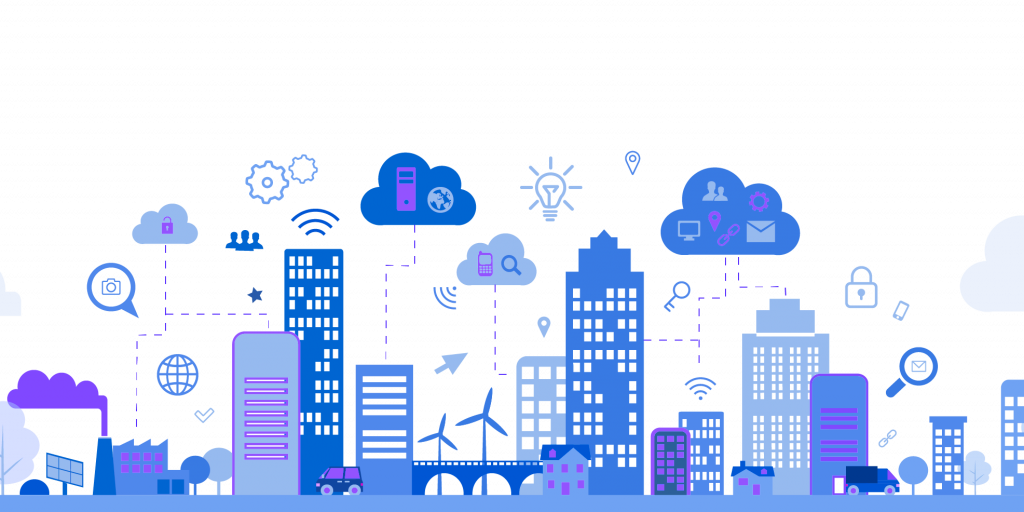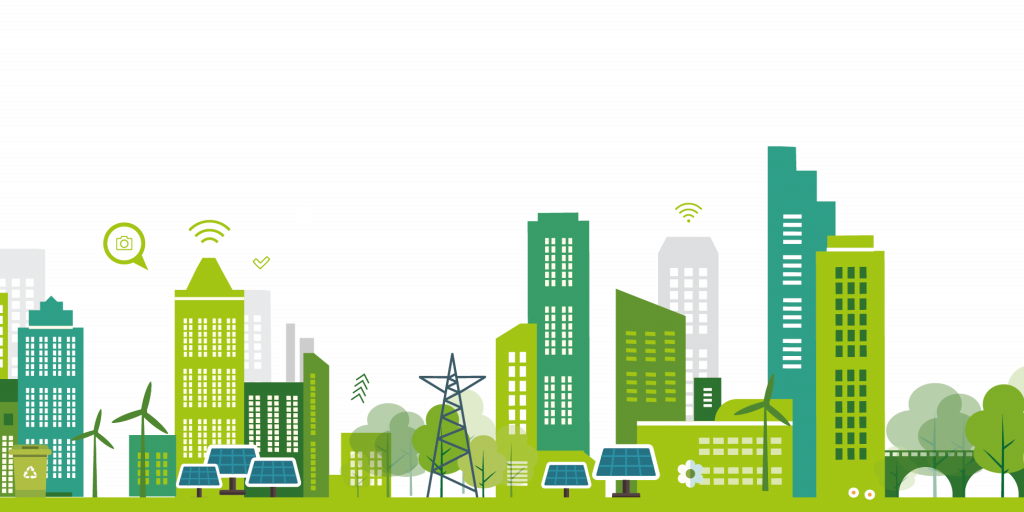Team NGI Forward has got off to a cracking start in the new world of online conferences, with our debut session at IAM Weekend. Run by a collective of artists, technologists and activists, IAM brought together hundreds of attendees from across the globe to discuss The Weirdness of Interdependencies. We had a great time joining in and stirring up discussion about how we can make the internet more sustainable and climate-friendly. Here’s how it went.
Our aims
We’re experiencing an unprecedented and likely unsustainable proliferation of connected devices, data and traffic. Do we risk sleepwalking into a future of internet curfews and Netflix-shaming? Or can good policy and ‘smart everything’ save the day? We wanted to create an immersive workshop about these strange futures and difficult choices.
How we did it
Let’s start with some notes on the format of our workshop since everyone is looking for ideas on running online events these days. We used video conferencing and a shared slide deck so we could update it real-time with attendee contributions. For the interactive section, we used breakout rooms to split into two groups of around 15. It worked well, and as you’ll see below, we collected a ton of ideas from our willing participants.
The internet’s environmental impact
We started with a discussion of what the internet is, and where it begins and ends. The boundaries are blurry, and we have embedded the internet in so many aspects of human life that its impact is widespread and in many areas difficult to define. Powering this global network requires vast quantities of electricity, estimated at between 5-9% of the world’s total generation capacity. Despite current efforts to move to renewable sources, most of the electricity powering the internet comes from burning coal and gas, which means that our internet use is creating 2% of global greenhouse gas emissions, roughly equal to the entire global airline industry.
With the advent of IoT and 5G, the sustainability of our digital lives will become a pressing issue in the years to come. Yet, we are doing relatively little to build social awareness, spur positive cultural change or capture the market opportunities associated with innovating for a more sustainable, resilient and ethically-sourced internet.
In the rudimentary map below, you can see the different groups of people and activities that contribute to the internet’s environmental impact. From users streaming video and the data centres that serve them, to the devices they use and the mining required to produce them, everything has an impact.
And here is a set of facts about each of these areas that hits home:
Two possible ways forward
Any policy change can have unintended consequences, so we decided to present two potential approaches to reducing the internet’s climate impact. We wanted to explore what the world would look like if politicians, businesses and citizens had to make more conscious decisions about connectivity, our data and the devices we use. We wanted to challenge participants to consider tough trade-offs, predict winners and losers, and think through unexpected consequences that could range from YouTube rationing and internet class systems to urban mining booms and net-zero stock bubbles.
To get us started,
Markus sketched out two
equally challenging ways forward. We decided we wanted to avoid creating a dichotomy
between decisive climate action and calamitous inaction. Instead, we created two
imaginary scenarios that involved work on a broad scale, just with a different
approach. In reality, the plan would likely include elements of both, but taking an
extreme makes a futures exercise more interesting!
At this point, we split
into two groups and used a futures wheel to plot out the potential consequences of
each scenario.
Here’s the template we used.
Scenario one: Fast Forward

In this imagined future, we’re going to accelerate our technological efforts towards solving climate change. There’d be an explosion of funding for research and development. We’d create apps, services and devices to help us monitor, analyse and act on the information we gather about the climate. We’d see all of the following actions:
💙Ramp up investment in green innovation and smart cities to mitigate climate
change
💙Drive forward the digitisation of public services and make
infrastructure ‘smarter’ to improve energy efficiency
💙Promote more
decentralised data infrastructure
💙Encourage the proliferation of connected
devices and data to better inform decision-making and policy
The good
This group predicted that new jobs, income streams and circular economy systems would emerge alongside greater access to the arts and the addition of new perspectives to global society. Greater efficiency in logistics and a greater variety of services available could lead to reduced digital lock-in for consumers, and digital tools could give us greater control over our lives.
The scenario would enable climate movements to rapidly scale, connecting people to local grassroots campaigns and improving coordination. We could see loneliness drop as we become more connected, with technology assisting ageing populations with healthcare and companionship.
We’d invest more in technology to reduce food waste, which could help to resolve food insecurity. The price of healthcare could drop due to automation, and we could even see the beginning of a Universal Basic Income.
The bad
On the negative side, our participants feared that this approach could exacerbate some already familiar problems. Greater reliance on technology could further challenge our right to privacy and worsen the digital divide. Remote areas and older people could also be left behind, which might make loneliness worse for marginalised communities.
We’ve seen in the past how a small minority of climate deniers can derail global efforts. Fake news could spread through the population like wildfire, making it challenging to verify the reliability of data. In this scenario, more people could gain access to the internet, and more conflicting views online could make it difficult to come to democratic decisions about what to do.
Policymakers and the justice system could also be too slow to keep up with the pace of innovation we’d see in a world focused on accelerating research and development. A delayed reaction here could result in failing to protect workers that lose their jobs to automation. That could include farmers, challenged by an increase in mechanised processing and even genetically modified foods.
Financial investment could be directed primarily towards large incumbent technology companies, crowding out small businesses in the online marketplace. Companies would also need to focus on long term investment in adapting, rather than short term gain.
Accelerating our adoption of technology could cause huge piles of electronic waste, with the toxic processing of rare earth metals and pollution rising interminably.
It’s a complicated picture!
Scenario two: Press Pause

In this future, we’ve decided to hit the brakes. We’d slow down emissions by reducing our use of technology. Our focus could move back to spending time in nature. There might be campaigns to shame people that stream content ‘excessively’. We’d likely see the following:
💚Increase taxes on – and remove subsidies for – fossil energy and ‘dirty’
technology
💚Redesign public services to be more energy-efficient and less
interdependent or reliant on the internet
💚Consolidate data centres, regulate
energy use and traffic
💚Introduce a right-to-repair, discourage further
proliferation of devices and encourage data minimisation
The good
This group felt that pressing pause would make things fairer by increasing tax on companies rather than individuals, forcing change at the core of the internet. Achieving this pause would require global collaboration on an unprecedented scale, presenting both a challenge and an opportunity to solidify global ties and collaborate.
With a more conscious approach to connectivity or even reduced internet access, we’d choose more carefully what to post online. The taxes collected in this scenario could fund all manner of social interventions, and we’d likely see a reduction in overall pollution. People could become more connected to their local communities, and we could bring marginalised groups into discussions on an equal level, especially those whom technology currently excludes because of their age, background or lack of infrastructure.
The bad
However, the consolidation of data centres could also lead to more centralised control over the internet, and it’s not clear whether this would be good for the environment in the long term. We could also see the emergence of a two-tier internet, where traffic for either vital services or wealthier groups is prioritised.
Moreover, a culture of click-shaming could develop, forcing people to reduce or even hide their internet use. Is this how we want our approach to the internet to change?
Trade-offs along the way
Together we identified a set of trade-offs when considering greening the internet.
Green tech vs ethical supply chains: Green innovation is still heavily dependent on problematic battery technology and critical raw materials, such as rare earth minerals. These are often sourced through unsustainable means and under poor working conditions.
Saving the climate vs economic stability: Our economy and innovation ecosystems are heavily dependent on high levels of consumption. If we stop buying new devices every year, jobs may be lost and not necessarily replaced. R&D investment will have to come from new sources.
Reducing consumption vs fair access: The global north and specific demographics benefit disproportionately from internet access. But there are still 3 billion people without a connection. Providing the same opportunities and fair access to everyone would have a tremendous impact on the environment and more environmentally friendly devices would likely be prohibitively expensive for many.
Public interest vs consumer benefit: Consumers are voters. Policies that hurt them tend to be unpopular. If we encourage companies to sell phones without chargers, will they just make greater profits to the detriment of lower-income families? Are we willing to stick with old phones for longer or pay a premium for repairable devices?
We don’t have the tech or the equality
The groups also questioned how long it would take to develop the technologies required. We decided that we will need serious investment in technology and corresponding public policy in either scenario, but that neither was particularly appealing overall. Large companies will likely be better prepared to adapt, but this depends on their sector. The geographical and political context of companies and users is another barrier to enacting these changes.
Both groups reflected next on who would benefit from these scenarios, and the answers were similar. Some participants expressed pessimism that either scenario would do much to shake up the power imbalance in the digital economy. We could easily empower those currently in marginalised groups to connect and benefit in either scenario. However, connecting them would require coordinated, concerted effort from those in power. Without this effort, participants felt that current inequalities would be exacerbated, continuing the exclusion experienced by people with lower incomes, the socially isolated, people with medical conditions and older people.
Thank you, IAM!
We had a fantastic time discussing these issues with our lovely attendees, and we’ll be contacting them, so we stay in touch. The rest of IAM Weekend was both insightful and great fun; we’d highly recommend it.
